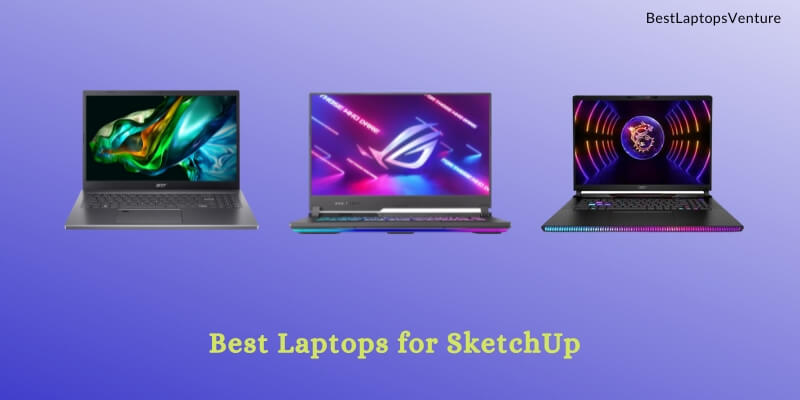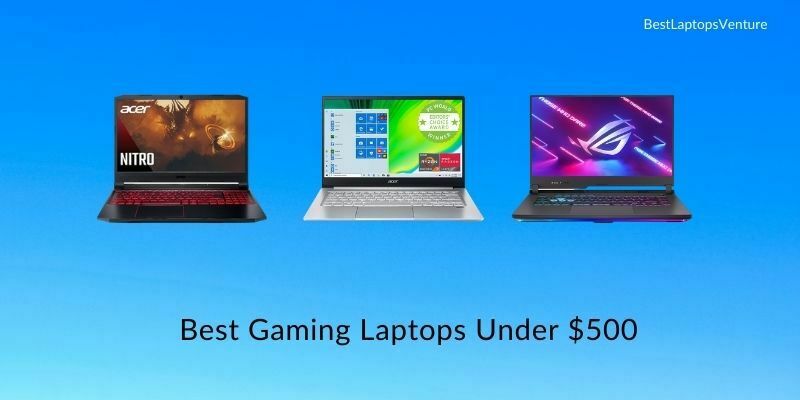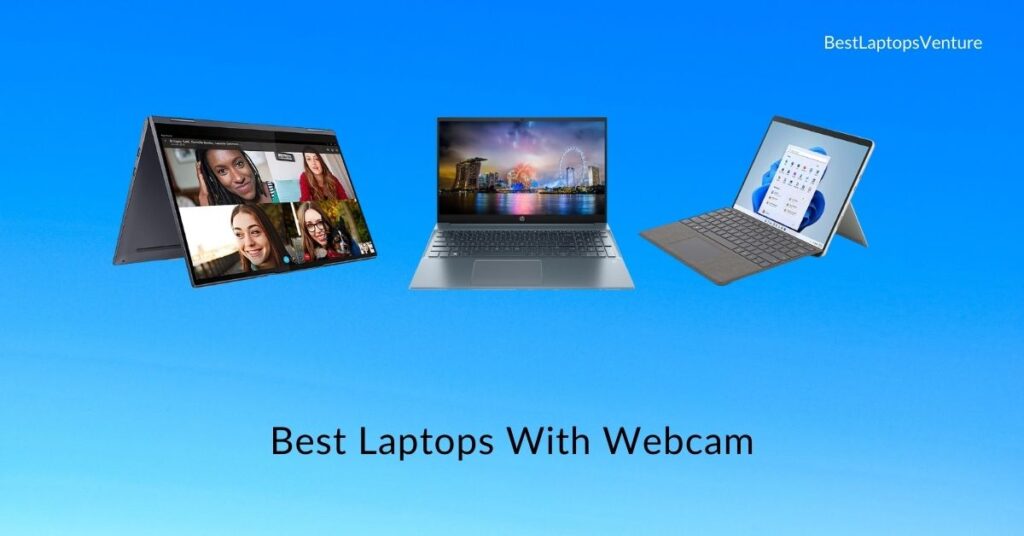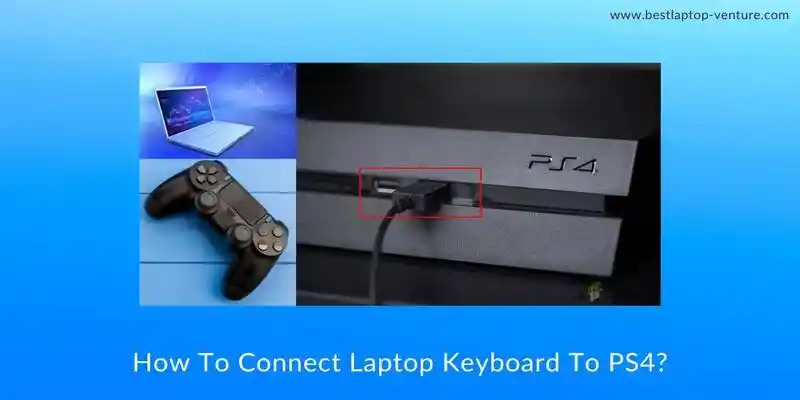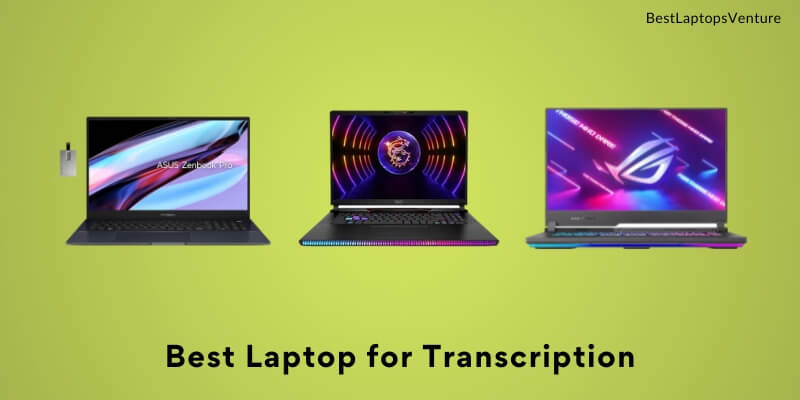
A reliable and efficient laptop is essential for professionals seeking innovation and productivity in today’s fast-paced transcription industry.
Transcriptionists should not miss this year’s best laptops for Transcription.
There are a number of features and technical specifications associated with these computers. Do you know which ones are preferable when buying a laptop for Transcription?
Our goal in this post is to inform you. This article aims to provide an objective and informative overview of the best laptops for Transcription.
This article will examine the top choices available to transcriptionists, including the ultimate transcription laptops, budget-friendly options, high-performance machines, portable powerhouses, sleek and stylish designs, superior audio quality, versatile multitasking capabilities, and reliable battery life.
Top 9 Best Laptop for Transcription in 2024 [Recommended]
Dozens of laptops were tested first to ensure they surpassed transcription needs. Let’s look at 9 of the best laptops in the market to meet your Transcription and other computer-related needs depending on your budget and your usage.
Here, the models are categorized according to budget, performance, and portability.
1. Lenovo Yoga 7i: The Best Bundle for Transcription
[amazon box=”B0CBPMYMGH”]
Lenovo Yoga 7i is a performance-focused device powered by a 10-core, 12-thread latest 13th Gen Intel Core i7-1355U processor with frequencies up to 5.00GHz, delivering a 34% increase in CPU speed compared to the previous generation chip. In single-core tests, the 13th Gen i7 is more energy efficient than the previous 12th Gen model, although it’s not as dramatic.
The transcription setup used a wired AltoEdge USB footswitch, wired headphones, and his second monitor (connected via HDMI). Use the pedals to operate Express Scribe without the distraction of your laptop. Screen sharing takes no time. With enough processing cores, the Yoga 7i could handle an audio editor, recorder, and Express Scribe at the same time.
The heat dissipation effect of Yoga 7i is quite good. While charging, the keyboard and mouse pad may feel a little warm, but not unbearably hot. However, if you plan to record voice memos for Transcription, we recommend turning on battery-saver mode. This reduces CPU power consumption and core temperature, quiets the fan, and lets you record clear audio files.
To get the most out of your device, we recommend uninstalling any included bloatware, except for Lenovo Vantage and Companion apps, which are important for customization and updates.
As for storage, it has a 512GB SSD, which is suitable for editing and transcribing several hours of audio. If you work full-time on a site like GoTranscript, we recommend uploading some archives to an external drive or upgrading to an SSD. Speaking of which, replacing an SSD can be a nightmare, and be aware that the screws are built to be very tight. We recommend consulting a professional regarding this.
On the other hand, I found the 16GB of onboard DDR5 4800 MHz RAM to be more than enough to run Express Scribe for typing and Audacity or Crisp to filter out background noise. Although it’s not as future-proof as the 32GB memory configuration, there are no lags or lags when ripping audio files. The RAM is not soldered in, so you can also upgrade it later if needed.
The 15.6-inch screen has an excellent FHD (2240 x 1400) resolution. The colors are well-adjusted, but can sometimes look a little washed out, but this is not a transfer issue. However, you can also adjust the screen later for a better experience. Plus, it gets the job done with 300 nits of brightness.
The case measures 12.51 x 8.76 x 0.69 inches and weighs 3.41 pounds, making it not very light but easy to carry and handle. The Yoga 7i is 200 grams lighter than its predecessor and has a slimmer chassis, but it’s still a bit heavy by modern standards. There are also some welcome design changes, including a ThinkShutter camera and a fingerprint reader integrated into the power button.
The Lenovo Yoga 7i’s battery life isn’t long either, lasting around 6 hours on a full charge (45Wh battery) unless you use a lot of multimedia. However, the laptop’s power consumption has been reduced to 66.4W. It is compatible with a 65W charger, so you can leave your laptop plugged in for long transcription sessions without worrying about it overheating.
In addition to the Type-C charging port, it has a headphone/mic combo jack, a USB 2.0 port, a USB 3.1 port, and an HDMI port. USB ports are limited. Besides the foot pedal and hard drive, there are no ports for connecting an external ergonomic keyboard or mouse. We recommend purchasing wireless peripherals or investing in a USB hub.
I found the Lenovo Yoga 7i’s keyboard comfortable to use, even during long sessions. The tactile keys are much better than his ThinkBook models in the same price range, and the backlighting is also a nice bonus. Middle-click is useful for Transcription, and allows you to copy and paste sections more efficiently than keyboard shortcuts. Like most E-series models in this price range, the device has solid construction, although the cheap materials, and the built-in webcam is repairable at best.
Overall, the Lenovo Yoga 7i is a solid manual transfer laptop with a touch-sensitive keyboard and a powerful processor.
2. Apple MacBook Pro Laptop M2 Pro: The Best MacBook for Transcription
[amazon box=”B0BSHF7LLL”]
When it comes to managing your professional activities and work materials, nothing beats a MacBook Pro. Therefore, his latest MacBook Pro, with its innovative security measures and powerful suite of processing features, is the perfect device for any work profile.
Whether you’re using Transkriptor, Trint, or both, this chip provides great performance.
When it comes to processing power that can easily handle various business tasks, the 12-core Apple M2 Pro processor with a turbo clock speed of 5.0GHz is one of the best and most reliable choices. Complementing the 12-core CPU is professional-grade 19-core M2 Pro integrated graphics. This processing setup ensures error-free Transcription and is suitable for high-end tasks.
Apple has reserved space for a 16GB Unified RAM module so that disk caches, files, and even residual data can be processed as quickly as possible. The MacBook Pro M2’s storage drive offers a generous 512 GB of SSD space, with memory allocations that match or exceed those of Windows laptops. As for the operating system, you can use macOS Catalina.
The 16.2-inch Retina display with in-plane switching technology and an overall resolution of 3456 x 2234 pixels is a plus for creative professionals. The DCI-P3 palette is designed for color accuracy and delivers life-like images. But what stands out most is that the Magic Keyboard is considered more commercially relevant due to its 1mm of travel, 6-speaker audio setup, and other solid industrial-grade specs.
Despite its 16-inch behemoth, the MacBook Pro weighs just 4.7 pounds and includes four Thunderbolt 3 slots, making it easy to add data peripherals and external displays. Additionally, the Touch ID and Touch Bar features combined with the T2 security chipset ensure proper security and accessibility in the workplace.
The battery, on the other hand, is a market driver, and Apple has already promised and proven its 21-hour battery life. So, if you don’t want to rely on the Windows 10 operating system to achieve your career goals, the 16-inch MacBook Pro is the perfect computer to consider.
On the other hand, if you’re in a tight financial situation, the [amazon link=”B0CDJL36W4″ title=”MacBook Air M2″ /] is also a viable option. The productivity-enhancing specs are the same, but you’ll have to settle for 16GB of RAM, a smaller screen, and 256GB of solid-state storage. However, the 15.3-inch MacBook Pro is equipped with Apple’s latest 8-core M2 processor.
3. HP 15: A Budget-friendly Laptop for Transcription
[amazon box=”B0C4QW818X”]
The HP 15 is powered by a 13th Gen Intel Core i7-1355U processor. This is a significant improvement over his previous i7-1260U, with a 23% increase in single-core performance and a Turbo Boost cap of 5GHz. It also has integrated Intel Iris Xe Graphics, giving you some flexibility if you plan on using the laptop for light gaming or streaming as well.
The transcription setup process is easy. Connect your USB pedals, headphones, and second monitor, and you’re ready to go. Although it doesn’t use much CPU, I was able to use Trint without any command delays.
This laptop comes with 32GB DDR4 RAM, expandable up to 64 GB, whereas the previous generation’s 16 GB RAM could only be expanded up to 32 GB. Note that only 16GB of RAM is available, with the rest taken up by the integrated GPU. However, we recommend upgrading RAM only if your use case goes beyond simple Transcription and navigation. If not, 32GB will easily run Express Scribe and Audacity without any lag.
The SSD on your device has 1TB of SSD space, which is convenient, but can fill up quickly, especially if you’re transcribing full-time or downloading and processing dozens of hours of audio and video files. It becomes. As with the ThinkPad E15, we recommend purchasing an external hard drive or upgrading your SSD to 2TB or 4TB.
The HP 15 doesn’t overheat, but the fan is louder than expected, which can be an issue if you record audio, notes, or meetings for later annotation. We are running HP CoolSense, and it takes 3-4 weeks for the app to fully adapt to the environment and control the fans accordingly. At the same time, turn off his BIOS fan before recording. However, we do not recommend turning off the fans completely to avoid reducing CPU performance during overheating.
In terms of display, the large 15.6-inch screen gives you enough space to zoom out and view different sections of text. However, the screen is not full HD and only has a resolution of 1920 x 1080 pixels, which is suitable for media consumption. Brightness is also below average (only 250 nits), making it difficult to use outdoors, especially when transferring files in dark mode.
From a build standpoint, the HP 15 is a little less portable than the ThinkPad E15, weighing in at 4 pounds, but that’s to be expected given its larger screen size. The device chassis dimensions are 14.13 x 9.02 x 0.73 inches.
When I ran Trint with a few tabs running in the background and normal screen brightness, the battery lasted 6-7 hours, and up to 8.5 hours with minimal usage.
Connectivity on the HP 15 is good. It has a smart AC pin for charging, a headphone/mic jack, an HDMI port, and three USB ports (one USB-C, two USB-A) that fit comfortably on the pedal. It must be connected. Monitor, ergonomic keyboard, external drive. There is no microSD slot, so a docking station is required.
The HP 15’s keyboard is comfortable and has low-profile keys. Transcription can be difficult on smaller devices, so the large palm rest under the HP 15’s keyboard didn’t put too much strain on my wrists, even during long periods of typing. My only complaint is the lack of a backlight. This isn’t a big issue, but it would be nice to add. The chassis design is sleek but doesn’t feel flimsy. The sound coming from the speakers is very quiet, but the audio sent to external speakers or headphones is very clear.
Although it was easy to set up using Express Scribe, I had to remove a lot of old software the first time I started the laptop. These programs include McAfee LiveSafe, HP JumpStart, Energy Star, and more.
All things considered, if you need a reliable Windows laptop for audio Transcription, the HP 15 is a good choice. I liked the large screen and palm rest, and the processor ran Trint without any lag.
4. Dell Inspiron 15: Best Versatile Laptop for Transcription
[amazon box=”B0CHB9MR2M”]
The Dell Inspiron 15 laptop is powered by a 13th-generation Intel Core i7-1355U chip processor. The new model has a base frequency of 3.4 GHz (up to 5 GHz) and has a 13.5% performance increase compared to its predecessor.
To input on the Inspiron 15, I connected an AltoEdge pedal and ran AmberScript. Project the tab to his second monitor using HDMI. This laptop is compatible with all external devices, and the typing experience was seamless.
I had some issues with cooling this laptop. During intensive tasks like rendering, the CPU dropped to 15-16 W TDP in just 15-20 seconds. Thermal throttling isn’t as bad while editing or transcribing audio, but it’s still noticeable. We use ThrottleStop to solve this problem, but at the cost of a small but noticeable decrease in CPU speed.
Fans are normally quiet, but when operating intensively, they can produce noise that can affect transcribed recordings. To prevent background wheezing, use the Dell Power Manager app and select the “Silent” option to limit fan speed. It’s possible to disable Turbo mode accidentally, but I didn’t see a significant difference in overall performance.
The Dell Inspiron 15’s big selling point is its 1TB SSD drive, which can be upgraded to double the size. The remaining hard drive space is enough to store several hours of audio files, videos, and transcripts. However, because it’s not an SSD, it doesn’t boot as quickly as a MacBook, and it takes longer to load audio and video files for Transcription. We recommend connecting an SSD for better responsiveness.
It comes with 32 GB DDR4 RAM and is expandable up to 64GB. With free memory, AmberScript applications do not hang or crash even when multiple tabs are open in the background. However, if you use your laptop for other tasks, such as video editing or rendering, installing 32 GB of RAM will be more helpful.
The screen is equipped with a 15.6-inch full HD panel. However, the brightness is only 220 nits, making it difficult to use outdoors or in bright environments. If you have a second monitor connected, we recommend switching the main transcription tab to that screen.
The Inspiron 15 chassis measures 14.11 x 0.75 x 9.25 inches and has a total weight of 3.82 pounds. Although not the thinnest or lightest model in its class, this laptop is suitable for everyday use and travel. The construction is solid, durable, almost premium-looking, and the hinges are sturdy too.
This laptop has a 65W battery that lasts 6.5 hours under typical workloads, but streaming video transcription drains the battery faster than audio so the usable range may vary. It is worth considering that there is a gender. If you run into issues, turning off background processes or running battery-saver mode can increase uptime.
The Inspiron 15 has good connectivity options, including three USB ports (two USB 3.2 and one USB 2.0), an HDMI output, a headphone jack, and a media card reader, whereas the HP 17 doesn’t. Since you don’t need an external drive for attached storage, you’re left with an extra port after adding a keyboard and pedalboard, and you don’t have to carry around a hub to supplement it.
The keyboard is a comfortable size, the feedback keys feel great, and the backlighting is a welcome addition. Although the key travel is adequate, we recommend investing in an ergonomic keyboard to avoid unnecessary stress on your hands when working for long periods of time.
The Inspiron 15 has some outdated software that slows down AmberScript (especially his McAfee). Of the preinstalled packages, I only installed Dell Power Manager.
In our experience, the Dell Inspiron 15 has all the laptop features you need for transcription work. The backlit keyboard looks premium, and the 1TB hard drive gives you the freedom to install other programs.
5. Dell XPS 15: Best Color Calibration for Transcription
[amazon box=”B0CC2566C5″]
Despite the Dell XPS 15 9530 leaning heavily towards aesthetic flair, it’s still worth a lot as the best laptop for Transcription, courtesy of its stunning display and future-proof processor.
Basically, Dell has the latest 13th Gen 14-Core i7-13700H processor, and this is where it shines, especially when it comes to single-core processing. The 5 GHz turbo clock speed is extremely fast, making it an ideal resource for QuickBooks (accounting software), Twitch streaming, and even 3D modeling.
Although the Intel Arc A370M graphics card is intended to be used as a moderate gaming companion, the Turing architecture has a lot of business value, mainly thanks to its 4 GB of GDDR6 VRAM. This professional tool provides extensive GPU acceleration support for some processes commonly loaded on SoCs.
When it comes to temperatures, our laptop never got throttled, but the core temperature was close to the throttle level, and the fan was loud. To avoid overheating during turbo performance, we set the maximum fan speed to 80°C on the CPU and 70°C on the GPU. We recommend replacing the Armory Crate utility with G Helper. G Helper has an option to disable CPU boost, which reduces the CPU speed of your device by 10 degrees. If your laptop still doesn’t work, a laptop stand or a cooler like his IETS GT500 can also be helpful.
Next up is the ultra-fast 32GB DDR5 RAM module. Works with your processor to deliver unparalleled data processing speed and multitasking performance. If storage is one of your top priorities, the 1TB SSD is one of the best features. Similarly, the SSD module not only provides faster data recovery but also loads programs and the Windows 10 Pro operating system at lightning speed.
As for the display, there’s a 15.6-inch display with FHD+ (1920 x 1200p) resolution, an impressive 100% sRGB color gamut, and a stable 144Hz refresh rate, making the laptop even more versatile (144Hz competitive gaming compatible). Professional editing. The higher the update rate here, the better the motion effects will be in your video file, and the more details you can access. Unfortunately, the brightness of 250 nits is relatively low, but since most of the production was done indoors, it’s not a huge loss.
His high-end TUF series has a sturdy metal chassis that measures 13.57 x 9.06 x 0.71 inches and weighs 4.21 pounds, making it less stylish but not too ugly either. Battery life is moderate, with 90 WHr giving him 8 hours in economy mode and 6-7 hours of power under heavy loads such as rendering.
As for connectivity, there are two USB-A ports, one USB-C 3.2, one Thunderbolt 4, one HDMI, one LAN, and one 3.5mm headphone jack. The charger uses USB-C, so you’ll need a docking station for the four or five peripherals used in music video production. Most peripherals still use Type A, so USB-A access is a plus.
The output from the dual speakers here is good, but the microphone array is a bit average, and the webcam quality is low (720p). However, the Dolby Atmos speaker mode and AI noise reduction in the microphone are nice additions.
So, the Dell XPS 15 is more than just a high-spec gaming laptop. Its powerful features provide excellent performance during the Transcription, recording, editing, and exporting stages of audio and video production.
6. Asus ROG Strix G16: The Overall Best Choice for Transcription
[amazon box=”B0CBNY3MRJ”]
The Asus ROG Strix G16 is a very powerful laptop with a colorful display, a future-proof processor, and a very competitive price for Transcription.
In terms of processing performance, the 13th Gen Intel Core i7-13650HX is one of the best options with a turbo clock speed of up to 5GHz, and its NVIDIA GeForce RTX 4060 graphics coprocessor fully supports the energy-efficient quad-core CPU.
Asus ROG Strix G16 also leaves room for an 32 DDR5 RAM module. This is a great multitasking resource as long as his main hobbies are web browsing, online education, homeschooling, etc. Storage capacity is available, but subject to NVMe compatibility limitations.
As for the display, it has a 16-inch FHD resolution and 165Hz refresh rate, perfect for editing fine details and creating smooth transitions. However, IPS monitors are usable at best, due to poor color reproduction quality and visible backlighting. It’s possible to achieve 260 nits of brightness, but the narrow color gamut means you’ll need an accurate external monitor if you’re doing color-sensitive work.
When it comes to construction, the Asus ROG Strix G16 has an aluminum chassis, measures 13.9 x 0.9 x 10.4 inches, and weighs 5.51 pounds, making it neither the lightest nor the most portable. The hinge on the laptop is good, but the plastic is of poor quality. The 57Wh battery lasts about 8 hours for light use, but only 5-6 hours for heavy recording and editing.
The port selection on the Asus ROG Strix G16 is excellent. There are three USB 3.2 ports, one USB-C, one HDMI, one 3.5mm jack, and Thunderbolt and DisplayPort. USB-C supports fast charging, but the separate DC-in port allows you to connect more peripherals than Asus allows while connected. However, if your peripheral needs exceed this, a docking station hub is a better choice.
We found the keyboard to be a bit flimsy and the letters on individual keys to be easily smeared. On the other hand, the 720p webcam and microphone array are fine, as are the built-in speakers.
In short, the Asus ROG Strix G16 is a comprehensive gaming laptop that can handle most simple editing and recording needs. Its performance is decent for a budget laptop, although it might struggle a bit with complex tasks like 4K editing.
7. Acer Nitro 17: High-Performance Laptop for Transcription
[amazon box=”B0BTQS4N1F”]
A great budget option for Transcription, the Acer Nitro 17 is equipped with an 8-core, 8-thread AMD Ryzen 7 7840HS with a maximum clock frequency of 5.1GHz. Its performance is slightly better than his ThinkPad’s i7 and about 35% better than the previous generation Ryzen 7 6800U.
Performance is greatly better than i5 due to a higher core count and minimal bottlenecks. Overall, I’m satisfied with how well this device works with his Transcription Creator.
Thermal throttling was barely perceptible, and the device remained fairly cool even under load. Surprisingly, it’s completely silent. The case gets a little hot, but you can always put the device on the table, so it’s not a big issue. We’re happy to see such good thermal performance in this affordable device.
Like the MacBook and ThinkPad, the Acer Nitro 17 comes with 16 GB DDR5 RAM and a 1TB Gen 4 SSD for excellent memory management like other models. Fortunately, you can upgrade both RAM and storage to prepare for the future. You can also easily save RAW files using external storage devices.
The 17.3-inch 1920 x 1080 Full HD display is the weak point of this device. Viewing angles are good, but the colors are dull and ruin the viewing experience. The brightness is also a little low at 250 nits, which reduces visibility outdoors. However, most devices in this price range have similar display quality, so we can’t complain too much.
The port selection is good, with one USB-C 3.2, two USB 3.2 Gen 1 ports, one USB 2.0 port, one Ethernet, one HDMI 2.0, a headphone jack, and a charging port. USB-A and USB-C ports allow you to connect various types of audio interfaces and other accessories. However, it doesn’t have the Thunderbolt port that other devices on this list have, but that’s acceptable, given the price.
There are several features that make the Acer Nitro 17 even more valuable. These include a beautiful backlit keyboard, Kensington lock, webcam, and more.

This laptop measures 15.76 x 1.1 x 11.55 inches and weighs 6.61 pounds, making it a fairly portable device. The build quality of the device is a bit cheap as the machine got multiple scratches during testing. Fortunately, there are no major structural issues, so skinning your device should not cause any problems.
The device lasts about 8 hours on a single charge, which is barely enough for a day’s use. Luckily, this laptop supports fast charging using the included charger, so you can easily charge your devices.
Overall, we were impressed with all the amazing features and performance of the Acer Nitro 17. It also has a wide selection of ports and easy user upgrades. Best of all, unlike many other laptops in this price range, you don’t have to make any major compromises.
8. MSI Thin GF63: The Best Mobile Workstation for Transcription
[amazon box=”B0BT3CD75G”]
MSI Thin GF63 belongs to MSI’s high-performance gaming notebook series and is equipped with a 12th generation Intel Core i7-12650H processor with 14 cores and 20 threads, and has a maximum turbo boost frequency of 4.7GHz, which is approximately 14% faster than previous models.
Achieving improved performance. Previous generation i7-11800H. Even though he has two more cores, its performance is about 21% worse than his MacBook’s M2 Pro. I tested MSI Thin GF63 using Pro Tools and found it to perform very well.
MSI Thin GF63 surprisingly maintained temperatures well with minimal fan noise when running his DAW with multiple tracks and large templates. The MSI Thin GF63 is surprisingly quiet for a gaming laptop, even compared to its predecessors. Fan noise only occurs when the device runs continuous benchmarks and stress testing, but it shouldn’t be an issue while recording.
When doing intensive work, you can always control the temperature of your laptop by raising the device slightly to provide space for airflow and keep your device cool. If you want to reduce temperatures even further, you can use MSI Afterburner to overclock your CPU, but this will reduce performance slightly. We recommend doing this only if the equipment gets hot during production.
Our model comes with 16 GB DDR4 RAM and 512GB SSD. It has enough RAM to handle both large libraries and repertoires. There is also enough storage space for your transcription work. However, if you plan to store RAW files or large libraries locally, consider purchasing an external storage device, as they can take up 1TB. Luckily, the memory and storage can be upgraded to 64GB and 2TB, respectively, extending the unit’s lifespan.
The MSI Thin GF63’s 15.6-inch FHD (1920 x 1080) IPS display is a bit disappointing. Colors are dull, and viewing angles are average, which doesn’t make for a comfortable viewing experience. Also, the low brightness makes it difficult to use in direct sunlight or in a bright room. MSI compensates for this to some extent by offering a 144Hz refresh rate panel, making for a smoother viewing experience.
MSI Thin GF63 has a good port selection. Comes with 1 x USB 3.2 Gen 1 Type-C, 2 x USB 3.2 Gen 1, 1 x USB 2.0, 1 x HDMI, RJ-45 Ethernet port, headphone jack, and charging port. USB-A and USB-C ports allow you to connect to almost any type of audio interface.
MSI Thin GF63 has some exciting features that set it apart from the competition, including an excellent webcam, backlit keyboard, and NVIDIA GeForce RTX 4050 GPU. This device is quite heavy, weighing 4.1 pounds and measuring 14.13 x 9.99 x 0.85 inches. You can put it in your backpack, but the weight is definitely noticeable. This model is also known for its easily broken hinges. Although our model does not have this issue, we recommend that you be careful when powering your device off and on.
Battery life on the MSI Thin GF63 isn't great, with a screen on time of around 4 hours. However, this is to be expected for a gaming laptop of this caliber. Due to the device's size and short battery life, we recommend connecting your device to a power source for optimal performance.
Overall, the MSI Thin GF63 is a good choice for anyone looking for a powerful gaming device with good performance and decent features. It’s quiet enough for even basic workloads and maintains a good temperature. More RAM and storage capacity would also be welcome, especially considering it’s upgradable.
9. Razer Blade 14: A High-configured Laptop for Transcription
[amazon box=”B0C54DR6Y2″]
The Razer Blade 14 gaming laptop features ultra-efficient vapor chamber cooling technology to keep your graphics card and CPU running at peak performance even during long gaming sessions. This way, no matter how intense the action is, you won’t have to deal with lag or slowdowns.
Equipped with next-generation DDR5 (4800MHz) memory. This allows you to easily handle all your video editing tasks without any lag or slowdown. With 32GB DDR5 RAM, you have enough space to tackle your most complex projects.
CPU and GPU
The Razer Blade 14 is powered by the newly announced AMD Ryzen 9 7940HS processor with Turbo Boost up to 5.2GHz. This powerful processor provides superior performance for Transcription, gaming, streaming, and video editing applications.
The recently launched Razer Blade 14 gaming laptop is one of the best Transcription laptops on the market right now. It offers a wide range of features and specifications that are perfect for any Transcription, including a powerful processor, plenty of RAM and storage, a large screen, and a variety of connectivity ports.
The NVIDIA GeForce RTX 4060 GPU produces realistic ray-tracing graphics and is praised for his AI-powered NVIDIA DLSS technology. This powerful graphics processor is perfect for video editors who want to create Transcription and high-quality images for their projects.
The Razer Blade 14 features his NVIDIA Broadcast, a powerful live-streaming tool that lets you instantly share your gameplay with the world. You can use it to stream your gaming sessions to social media platforms like YouTube and Twitch, or share them with friends and family.
It also features NVIDIA Reflex, a powerful video editing tool that lets you easily edit gameplay footage and create stunning montages. Perfect for video editors who want to create professional-quality videos.
Memory and Storage
The Razer Blade 14 comes with 32GB of DDR5 memory, which is more than enough for Transcription workers. This powerful laptop can easily handle multiple apps and programs running simultaneously without any lag or issues. Memory speed is 4800MHz, one of the fastest on the market.
The Razer Blade 14 comes with a total of 1TB SSD storage capacity. For any Transcriptor, this is enough space to store all your projects, files, and footage. SSDs also have faster data transfer speeds, so you can quickly access and edit your files without any problems.
Display and keyboard
The Razer Blade 14 features a large 14-inch UHD display with a resolution of 2560 x 1440. The perfect size for video editors who want to see their projects in great detail. The screen also features a fast 240Hz refresh rate, so you can instantly view your edits without any lag.
The Razer Blade 14 also features NVIDIA G-SYNC, a technology that synchronizes the monitor’s update rate with the graphics processor’s frame rate. This eliminates screen tearing and stuttering when editing videos.
Razer Blade 14 features per-key RGB Razer Chroma Synchronize, allowing you to customize the color and lighting of every key on your keyboard. This allows you to create truly unique customizations to your editing workspace.
Connect with ports
The Razer Blade 14 features a variety of ports for all your connectivity needs, including a Thunderbolt port with data transfer speeds of up to 40 Gbps to connect high-performance peripherals like external graphics cards and high-resolution monitors. Masu.
There are also three USB Type-A ports (5 ports total) with fast charging capabilities for connecting storage devices, mice, and other peripherals.
The HDMI port on the Razer Blade 14 allows you to share content with an external display or stream video to a larger screen if needed.
The Kensington lock on this laptop is a security device that protects your laptop and its contents from theft. This laptop has a USB Type-C port that allows you to connect it to other devices such as smartphones and tablets.
Razer Blade 14 is equipped with a Gigabit Ethernet port, providing a fast and stable network connection for downloading files and streaming videos.
It also features a 3.5mm combo audio port, allowing you to connect headphones or speakers to your laptop to listen to music or watch videos.
This laptop is equipped with a Wi-Fi 6E (802.11ax) wireless network card that provides fast and reliable network connectivity.
The Razer Blade 14 also features Bluetooth, allowing you to wirelessly connect to other devices such as smartphones and tablets.
What could be better than this?
The only downside to the Razer Blade 14 is the price, which is expensive for a laptop. However, its features and performance more than makeup for the price. Overall, the Razer Blade 14 is a great laptop for Transcription, perfect for video editors looking for a powerful and feature-rich machine.
Our decision
The Razer Blade 14 is the perfect laptop for Transcripors looking for a powerful and feature-rich machine. It has all the basic specs and features a Transcription needs, including a large screen, fast refresh rate, ample storage space, and plenty of connectivity ports. This laptop will make you feel like a true professional and make your Transcripting workflow smoother and more efficient.
Before purchasing the best laptop for Transcription, check the following:
Today, we will not only tell you about the laptops that you can buy for Transcription, but we will also cover this specific topic in a detailed buying guide. Therefore, you should read the detailed guide before purchasing a transcription model.
Processor:
A good processor can perform your job smoothly and efficiently. In my opinion, when you buy a new laptop these days, you have two types of processors to choose from.
One is Ryzen, and the other is Intel. Choosing the latest generation processor will increase the productivity of your model and save you time. The processor plays an important role in your laptop’s performance.
It’s best to buy the latest Intel i7 or Ryzen 6 processors or higher. We’ve included all the best-configured laptops for Transcription. You can purchase any model listed.
Sound Quality:
The main thing to check before purchasing a transcription model is the audio quality. First, check whether the specifications are correct, and you will know which model is best suited and has high sound quality.
Many laptops offer Dolby sound. You can also check. This helps you perform various transcription tasks using your laptop.
Memory/Storage:
It is best to buy a laptop with sufficient storage capacity. This can be an SSD or HDD. Laptops with built-in SSDs are faster than older hard drives. If you want to buy a laptop with SSD and HDD, this is a good choice.
HDD provides more storage capacity, and SSD provides the fastest data processing power in your laptop. If your laptop has an SSD, the boot time will also be longer.
Camera Quality:
If you buy a laptop for Transcription, make sure it has a webcam. Almost every brand of laptop now has a webcam.
If you buy a laptop with a webcam, make sure the quality is 720p because 720p camera quality is perfect for everyday video calls and meetings.
Battery Capacity:
This is also an important aspect to check when buying a new laptop. If you are a professional transcriptionist or want to buy a model for medical Transcription, it would be nice to have at least 6-7 hours of battery backup.
Some premium brands like Apple and Google also offer an additional 9-10 hours of battery backup. You can purchase it according to your preference.
Brand:
Always choose popular brands like Apple, HP, Google, and Dell. It provides a more reliable and high-quality laptop than other regular laptops.
Price:
If your budget is not that high, but you are looking for the best laptop for Transcription, don’t buy a budget model without doing proper research. Today, we have selected only different series of laptops on the market.
Other Features:
Laptops from various brands also offer other features such as backlit keyboards, built-in antivirus software, free Windows 11 upgrades, and fingerprint reader functionality. You can choose any model.
All the above points are essential when buying a laptop for Transcription. Please be sure to read this before purchasing the model.
Laptops With Exceptional Audio Quality for Transcription
There are many factors to consider when choosing a laptop for Transcription, but good audio quality is very important. To ensure clear and accurate Transcription, investing in a laptop with the best audio capabilities is a must. Here are some laptops with excellent recording quality.
Laptops with noise-canceling technology: These laptops have advanced features that filter out background noise and ensure clear audio recordings. This technology allows transcribers to focus on the audio they need to transcribe without being distracted by surrounding sounds.
Laptops with software designed explicitly for Transcription: Some laptops come pre-installed with software designed specifically for Transcription. These software programs offer features such as audio playback control, variable speed playback, and automatic timestamps, making the transcription process more efficient and accurate.
Laptop with a high-quality microphone: A laptop with a high-quality built-in microphone can significantly improve its recording capabilities. These laptops capture audio with great clarity and precision, ensuring that every word is accurately transcribed.
Laptops with audio enhancement technology: Some laptops are equipped with audio enhancement technology that improves the overall audio quality. This technology helps increase volume, improve clarity, and optimize sound for transcription purposes.
When choosing a laptop for Transcription, it’s important to prioritize good audio quality. Investing in a laptop with noise-canceling technology, dedicated transcription software, a high-quality microphone, or audio enhancement technology will greatly improve the transcription process and give you more accurate and efficient results.
FAQs on Best Laptop for Transcription
What is the recommended RAM size for a laptop with transcription capabilities?
The recommended RAM size for your transcription laptop depends on several factors, including the complexity of your transcription software and the size of your audio files. 8 GB or more of RAM is recommended for smooth and efficient performance.
Are SSDs better for Transcription than HDDs?
Learn why solid-state drives (SSDs) outperform hard disk drives (HDDs) in terms of speed, reliability, and durability, making them the first choice for transcription professionals.
Can a cheap laptop handle transcription software efficiently?
Cheaper laptops can handle transcription software efficiently, but performance may suffer. Transcription software typically requires a certain level of processing power, so it’s important to consider whether an affordable laptop can effectively meet these needs.
Which operating system is best for transcription software compatibility?
Thorough research into the compatibility of various operating systems (Windows, macOS, Linux) and popular transcription software ensures seamless integration and optimal performance of your transcription tasks.
Does the recommended laptop have a built-in transcription pedal, or does it support an external pedal?
Yes, some of the recommended transcription laptops have built-in transcription pedals, while others support external pedals. These features increase productivity and simplify the transcription process for professionals in the field.
Do the laptops on your list have specialized transcription software pre-installed or recommended?
This list includes laptops with dedicated transcription software options. These laptops come pre-installed or recommended with specific transcription software to meet the requirements for efficient and accurate transcription work.
Why is a laptop perfect for transcription work?
Learn about important features like a fast processor, plenty of RAM, and noise-canceling technology to make your transcription tasks smooth and efficient.
How does high-resolution viewing affect transcription accuracy?
We understand the importance of fast performance and ensure accurate Transcription by reducing errors and improving readability, ultimately increasing productivity.
Are there laptops designed for transcribers with backlit keyboards?
Backlit keyboards offer many benefits to transcribers, including improved visibility in dark environments. When choosing a laptop for transcription work, consider factors such as processing power, storage capacity, and compatibility with transcription software.
Which laptop has good battery life for long transcription sessions?
Highlighting laptops with excellent battery life, transcribers can work for hours without interruption and without worrying about continuous charging, making them suitable for long transcription sessions.
How important is portability in a transcription laptop?
Learn how portability is important to transcribers who need to work on the go, and consider slim, lightweight laptops that combine functionality and portability for maximum convenience.
What role does RAM play in transcription efficiency?
Understand the importance of adequate RAM in multitasking and improve efficiency and productivity by allowing transcribers to work on multiple applications simultaneously without any lag.
How does keyboard layout affect transcription speed and convenience?
The keyboard’s ergonomic design, including backlit keys and comfortable key travel, dramatically impacts transcription speed, reducing typing fatigue and ensuring a comfortable and productive working experience.
Which laptop offers great audio quality?
Look for a laptop with advanced audio technology, such as a noise-canceling microphone and high-quality speakers, to ensure clear audio playback and accurate Transcription of recordings.
Are cheap laptops suitable for professional transcription work?
Consider affordable laptop options that balance affordability and essential features for professional transcription work without compromising performance and reliability.
Best Laptop for Transcription Review – 2024
Conclusion of Best Laptop for Transcription
So, in this article, we have tried to provide you with all the details that will help you choose the best laptop for Transcription.
All the laptops mentioned above have great features and are listed from best to worst.
- If you’re looking for a versatile laptop, consider the [amazon link=”B0BSHF7LLL” title=”Apple MacBook Pro M2″ /]. Although this is an expensive laptop, it has great security and features.
- Alternatively, if your budget is low, you can choose the [amazon link=”B0CHB9MR2M” title=”Dell Inspiron 15″ /] or the Microsoft Surface Laptop Go. Both have great features within their price range.
We hope you understand which laptop to buy for your transcription tasks.
Please leave your comments in the comments section below.
Read also: Best Laptop for Crafting



